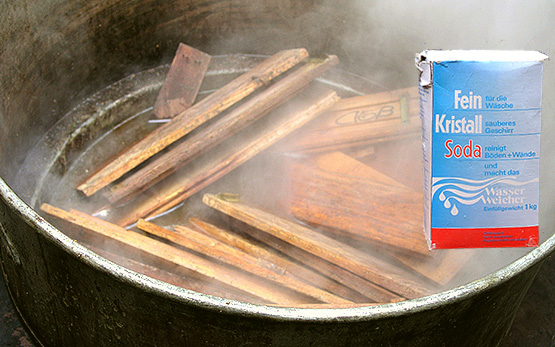Pezet R, Gindro K, Viret O, Richter H
Effects of resveratrol, viniferins and pterostilbene on Plasmopara viticola zoospore mobility and disease development.
Vitis, 43, (3), 2004, 145-148.
Pezet R, Gindro K, Viret O, Spring J
Glycosylation and oxydative dimerization of resveratrol are respectively associated to sensitivity and resistance of grapevine cultivars to downy mildew.
Physiological and Molecular Plant Pathology, 65, 2004, 297-303.
Pezet R, Perret C, Jean-Denis J, Tabacchi R, Gindro K, Viret O
delta-viniferin, a resveratrol dehydrodimer: one of the major stilbenes synthetized by stressed grapevine leaves.
Journal of Agricultural and Food Chemistry, 51, (18), 2004, 5488-5492.
Gindro K, Pezet R, Richter H, Viret O
La vigne réagit mécaniquement aux attaques du mildiou.
Journal Agri, 10, 2004, 16-16.
Gindro K, Pezet R, Richter H, Viret O
La vigne réagit mécaniquement aux attaques du mildiou.
In: . 2004, 14-18.
Vauclare P, Cots J, Gindro K, Widmer F
The glyoxylate cycle as an essential step in carbon reallocation mechanisms.
2003.
Gindro K, Pezet R, Viret O
Histological study of the response of two Vitis vinifera cultivars (resistant and susceptible) to Plasmopara viticola infections.
Plant Physiology and Biochemistry, 41, (9), 2003, 846-853.
Rigotti S, Gindro K, Richter H, Viret O
Characterization of molecular markers for specific and sensitive detection of Botrytis cinerea Pers.: Fr. in strawberry (Fragaria x ananassa Duch.) using PCR.
FEMS Microbiology Letters, 209, (2), 2002, 169-174.
Cots J, Fargeix C, Gindro K, Widmer F
Pathogenic attack and carbon reallocation in soybean leaves (Glycine max.L.): reinitiation of the glyoxylate cycle as a defence reaction.
Journal of Plant Physiology, 159, (1), 2002, 91-96.
Gindro K, Pezet R
Effects of long-term storage at different temperatures on conidia of Botrytis cinerea Pers. : Fr.
FEMS Microbiology Letters, 204, 2001, 101-104.
Gindro K, Pezet R
Effects on long term storage at different temperatures on Conidia of Botrytis cinerea Pers., Fr. (Poster abstract).
Gindro K.
Etudes de la sporulation de Botrytis cinerea Pers.:Fr.: purification, caractérisation et rôle d'une cutinase constitutive des conidies non germées.
Université de Lausanne. 2000.
Gindro K, Pezet R
Purification and characterization of a 40.8-KDA cutinase in ungerminated conidia of Botrytis cinerea Pers. : Fr.
FEMS Microbiology Letters, 171, 1999, 239-243.
Gindro K, Pezet R
Evidence for a constitutive cytoplasmic cutinase in ungerminated conidia of Botrytis cinerea Pers.: Fr.
FEMS Microbiology Letters, 149, 1997, 89-92.







